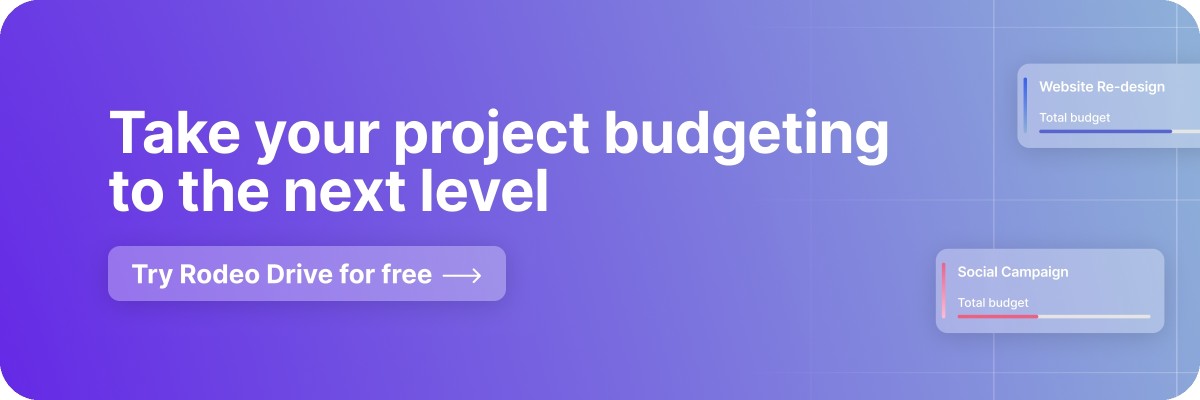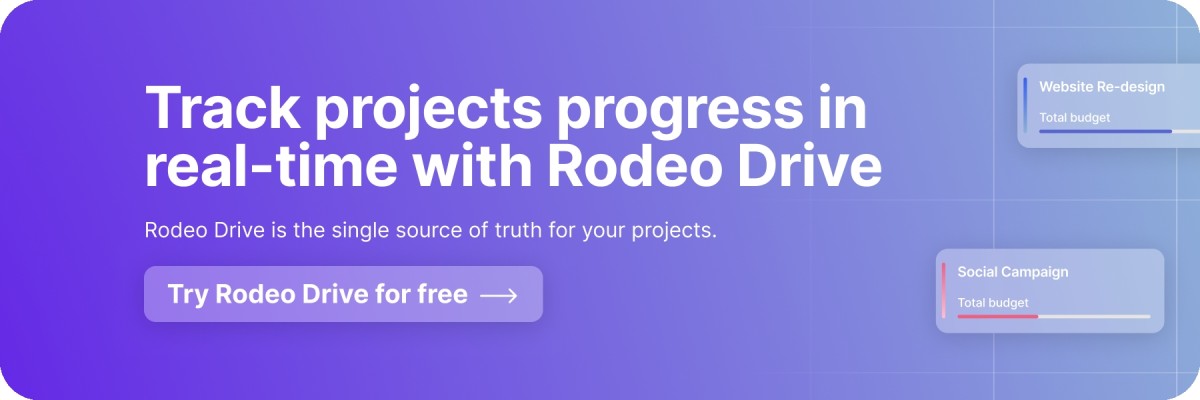What Is a Contingency Budget for Project Management?
As a project manager, you can never be too prepared. Preparation is the backbone of any successful project, as you’ll swiftly want to address unanticipated events or costs that might affect your project's progress. Without a proper backup plan, your team may struggle to recover when problems or crises occur.
Implementing a project contingency plan is something to consider if you don’t want to find yourself in the middle of a crisis without a solution.
In this blog, we’ll give you the rundown on everything you need to know about project contingency plans and how to create your contingency budget — let’s get started.
What is a project contingency plan?
By definition, a contingency is a future event that may or may not happen. Consequently, a project contingency plan is an actionable plan that determines how to deal with risks that could halt your project if they occur. See this as a part of your overall project risk management.
A contingency plan is an integral part of successful project management and helps you to better prepare for the unexpected.
But where do you begin? Let’s explore the basics of project contingency planning, why it’s essential, and what it looks like in the real world.
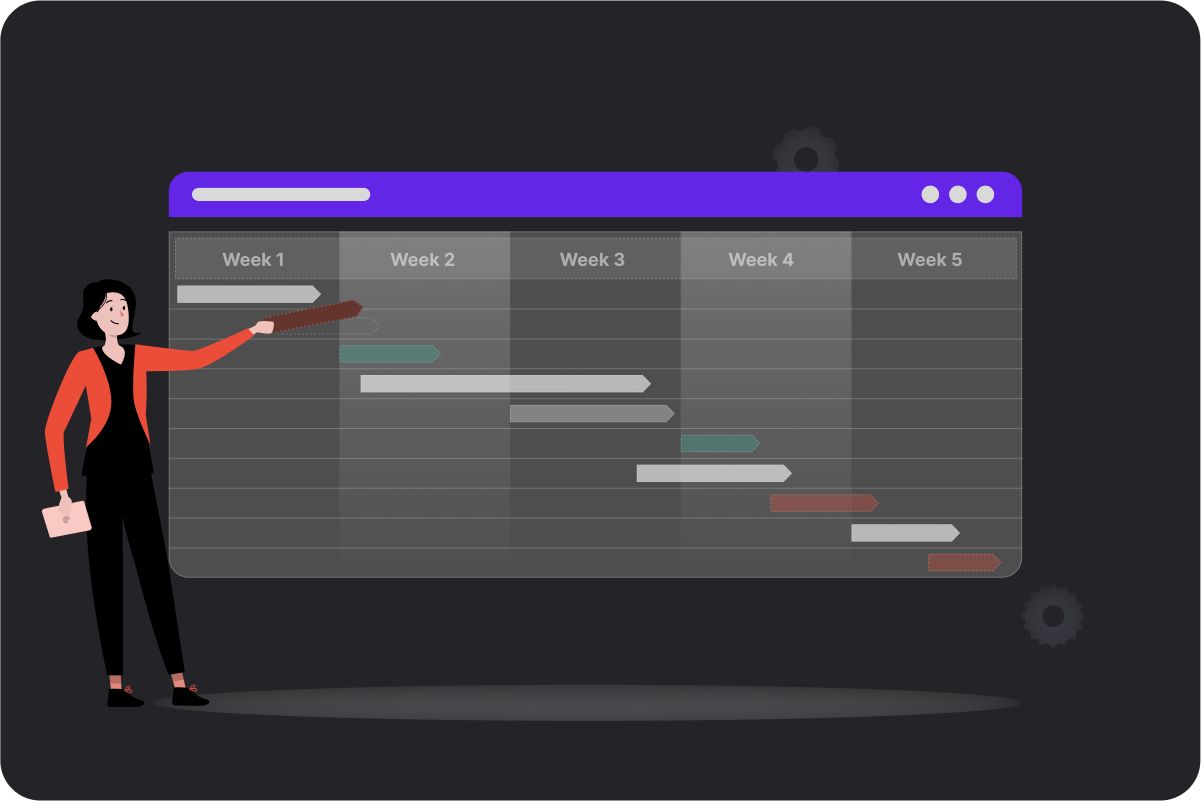
Contingency budget in project management
Your project stands or falls by your project budget. In project management, a contingency budget is a reserve of funds a business allocates to a project in case of unexpected costs.
Think of this budget as a safety net that allows your teams to stay on track despite any fluctuations in cost.
Unexpected expenses may include:
- Additional Materials
- Extra Labor
- Unplanned Events (cancellations, lost records, etc.)
- Equipment Repairs
As a project manager, it is your responsibility to establish contingency reserves. Make sure to implement your contingency budget at the very beginning of your project’s lifecycle to ensure that you never lose control of your funds.
Stay on top of your project budget with Rodeo Drive
Why do you need a contingency budget plan?
Even if you work in a low-risk industry and are used to projects running smoothly, there is still value in having a contingency budget. After all, it’s easy to get into the flow of tasks, workflows, and milestones and not worry about crises.
Even so, a contingency budget is a smart choice for all types of projects as it will generate your plan B. Here are some other key benefits of contingency planning:
- Financial security: A contingency plan gives you a cushion if unexpected expenses arise. With a plan in place, you won’t need to worry about how to pay for extra, unanticipated costs. Instead, you can stick to your schedule and keep moving forward.
- Reduced stress: Proper planning is essential to delivering high-quality work for your clients. A contingency budget covers emergency costs and reduces the stress on you and your team to bounce back quickly in an emergency. When you feel less stressed, you can focus better and keep your team members on track as you work toward a final goal.
- Improved financial health: If you don’t have extra funds for additional costs, you may be in a tough situation. Perhaps you’ll have to rely on a loan or credit card to cover unexpected costs, which isn’t good for the financial health of your team or company. A contingency budget alleviates this problem, improves budget health, and allows you to make sound financial decisions.
- Speedy recovery time: Having a budget for emergencies means you won’t need to derail your entire project because of one incident. This helps teams stay true to their project timeline and stick to their goals while minimizing damage caused by the unexpected.
- Improved reputation: Regardless of your industry, completely restructuring a project doesn’t look good. This is especially true if you have clients waiting on a final product that falls on an agreed timeline. About 32% of customers will walk away after just one bad experience. When you plan for unanticipated events, you help bolster your reputation as a credible business that keeps true to its promises and plans for the future and helps you better communicate status updates to stakeholders and clients.
How to calculate a project contingency budget
A typical contingency budget will range from 5-10% of a project's budget. Assess all risks associated with the project to estimate the contingency budget. These costs vary greatly between industries, and sometimes, such as in the case of an unexpected pandemic, they have nothing to do with the project but can still cause a great impact. The more time and care you take to establish a budget, the more accurate your allocation will be.
There are a number of considerations to make, including project team size, required materials, and your intended budget. It takes coordination to set an accurate contingency budget, so include your team members and stakeholders in this process and listen to their input as you try to set this number.
That said, consider these 3 components when setting a contingency budget during your project management process:
Industry
Every industry is unique, so it’s important to consider the unforeseen circumstances or risks associated with your line of business. For example, a construction project may face issues like the need for more raw materials or manual labor to reach the goal.
Or, for an event planning company, unexpected weather may disrupt the launch of the latest beachwear.
A video production studio may need to invest in new technology with AI on the rise. Businesses should also consider larger trends in their industry that are influenced by the economy, new competition, price increases, and other factors.
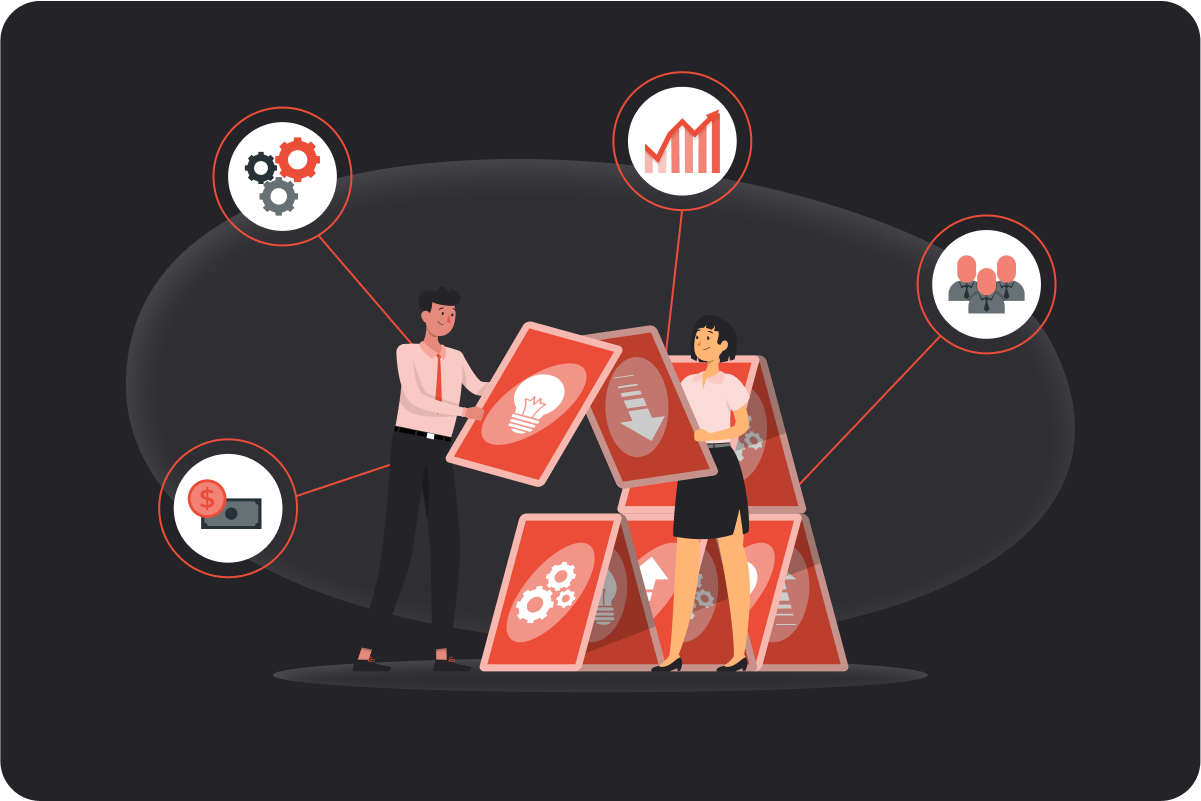
Project size and timeline
Your contingency budget will also depend on your project size and timeline. A smaller project may require less investment in contingency planning if the overall cost is smaller.
As a project manager, consider the timeline and ask yourself questions like “Is my team working through multiple seasons or quarters?” “Is there a chance of staff turnover during this time?” If your project spans multiple years, your risk for crisis or unforeseen issues may be higher, and therefore you’ll need a larger contingency budget.
Partner interests
If you’re working with a partner on a project, consider their needs and interests. Perhaps the other creative company is more technology-driven and may want a larger investment in new editing equipment at some point.
Of course, there’s no way to anticipate all the needs and new investments your partner may want, but consider what expenses you may face if the joint project’s needs or priorities change.
How to create a contingency budget in five steps
Setting a budget is just one part of the contingency planning process. You also need to plan for the logistics of interruptions and figure out how to handle any disruptions in future projects.
Though this may sound overwhelming, it’s easier when broken down into steps. Remember to communicate with your team and stakeholders, and take your time in developing a plan.
Here is an overview of how to create a contingency plan:
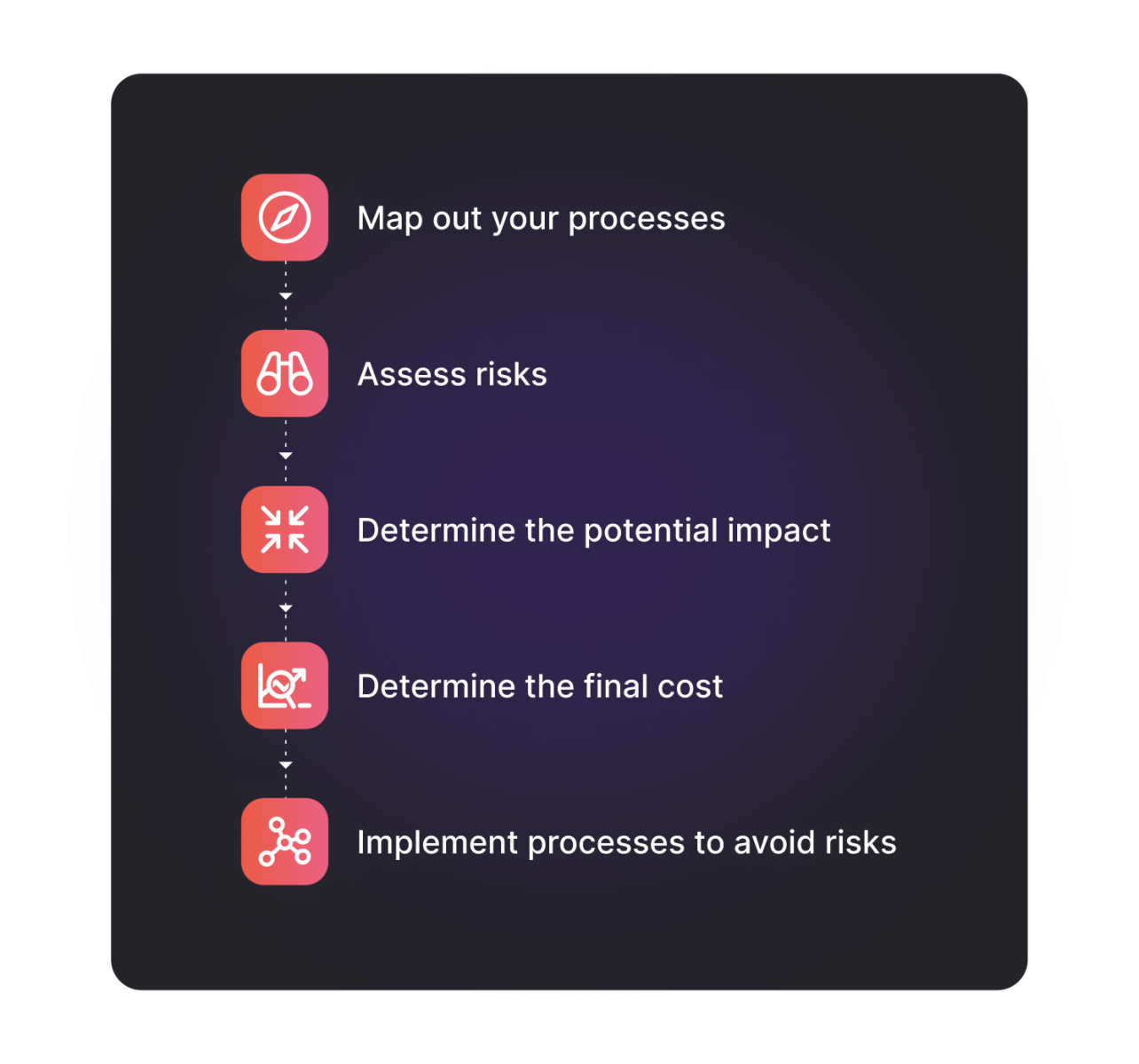
1. Map out your processes
First, you need to map out a timeline for your project and note every step of the process. Having a clear timeline breaks apart your project into smaller chunks and can help you foresee any budget contingencies.
For example, if you are a team leader for a creative agency, you may start with the initial client meetings, the development of objectives, team assembly, task delegation, and execution. Along the way, you may schedule check-ins, test new technology, or develop smaller goals to help your client get the best ROI on their latest social media campaign. Once you’ve mapped out the processes, it’s time to look for risks.
2. Assess risks
Now, carefully consider each step of your process and what could go wrong. Is there a chance, for example, that the software you want to try won’t work for your client? Or, what if a team member working on a specific task isn’t the best fit? Maybe there’s a chance that your costs will overrun if a portion of the process takes longer than expected.
Although you may not be able to consider every risk, work with your team to pinpoint as many issues as possible. As you begin contingency planning, you may think of more potential risks you weren’t initially aware of.
3. Determine the potential impact
Now that you have a list of risks, it’s time to evaluate their impact. This step involves critically examining the issue and its implications and noting the potential costs. You should also consider the likelihood of an event occurring and, if it did occur, how serious it would be for your team, timeline, and stakeholders.
Don’t get caught up in getting an exact number for an issue's cost, as this isn’t always obvious. Aim to estimate the expenses and how long it would take to resolve the issue and keep moving forward.
4. Determine the final cost
Now, it’s time to get your final number for your contingency budget, which usually falls between 5-10% of the total project cost. If you have a range of what a problem would cost, you can average the estimate or assume it will fall on the higher end.
Then you can add the potential expenses from each risk to get your final number. Check with your team and stakeholders to ensure your bases are covered.
5. Implement processes to avoid risks
As mentioned, a contingency is defined as an unexpected event that can happen but isn’t certain. Every project carries risk, and let’s be fair, life won’t be fun if we can predict every situation.
However, there may be opportunities to implement strategies that can mitigate issues.
Often, these strategies are simple. Make sure your team members are in the right roles, plan effectively, keep a positive attitude, and use resources and materials that you can trust. In addition, consider investing in an intuitive project management tool to keep your team on track so that, even if an issue arises, you’re prepared to tackle it.
Tips for effective contingency planning
Every business and project is unique, so depending on your situation, you may need additional steps in the contingency planning process. However, you can follow some tips to ensure a smooth contingency plan that will help ensure risk management. As you go about the planning process, keep these tips in mind.
Collaborate
While project managers have different responsibilities than other team members, collaboration is always key. Consult your colleagues and listen to their feedback while working on a contingency plan. If you aren’t as familiar with a part of the process, it’s important to talk with those who are, as they are more aware of the potential risks associated with their work.

Monitor your plan
Once your contingency plan is in place and your team is working on the deliverables, regularly check back in on your plan. Are new issues arising that you didn’t foresee? How can these problems be mitigated? Don’t be afraid to make changes to your plan. You may find that, as a project evolves, so do its associated risks.
Also read: Don’t Risk Your Project: 10 Steps to Handle Last-Minute Scope Changes
Be proactive
There’s sometimes no way to avert the unexpected. However, in some cases, you may see an issue down the pipeline that can be avoided. Be proactive in these situations, and don’t wait until disaster strikes to plan. Take steps to alleviate risk or equip your team with the skills to manage it.
What is an example of a contingency cost?
Now that we better understand contingency planning, let’s look at real-world examples.
Let’s say a marketing agency develops a contingency budget. For this project, the marketing team helps their client with website development and social media content. As this marketing team is mapping out the steps in their process, they realize that, in the past, they experienced a social media management tool being hacked and had to seek technical support to resolve the issue.
Although the team has moved to a new tool, they want to prepare for this issue. So, as part of their contingency budget, they set aside a cost for tech support if needed. To estimate this cost, they considered the following:
- Level of support: The team examined how much in-house tech support they have and what they would need to outsource in an emergency.
- Tech company: The team also considered what technical company they would use. Maybe, in the past, they weren’t satisfied with the work of the previous IT team. So now, they look at other companies and their rates to better estimate what it would cost.
- Likelihood: What are the chances that this same problem will happen again? If the team thinks it’s unlikely, they may set aside less money.
- Team input: Even if a project manager spearheads this plan, they would want to talk with the social media team for advice. The social media team can give input on what would happen in this situation and what costs they might accrue. Collaborating with these team members can also help the project manager estimate how long it would take to get back on track after an emergency.
What is a contingency plan example?
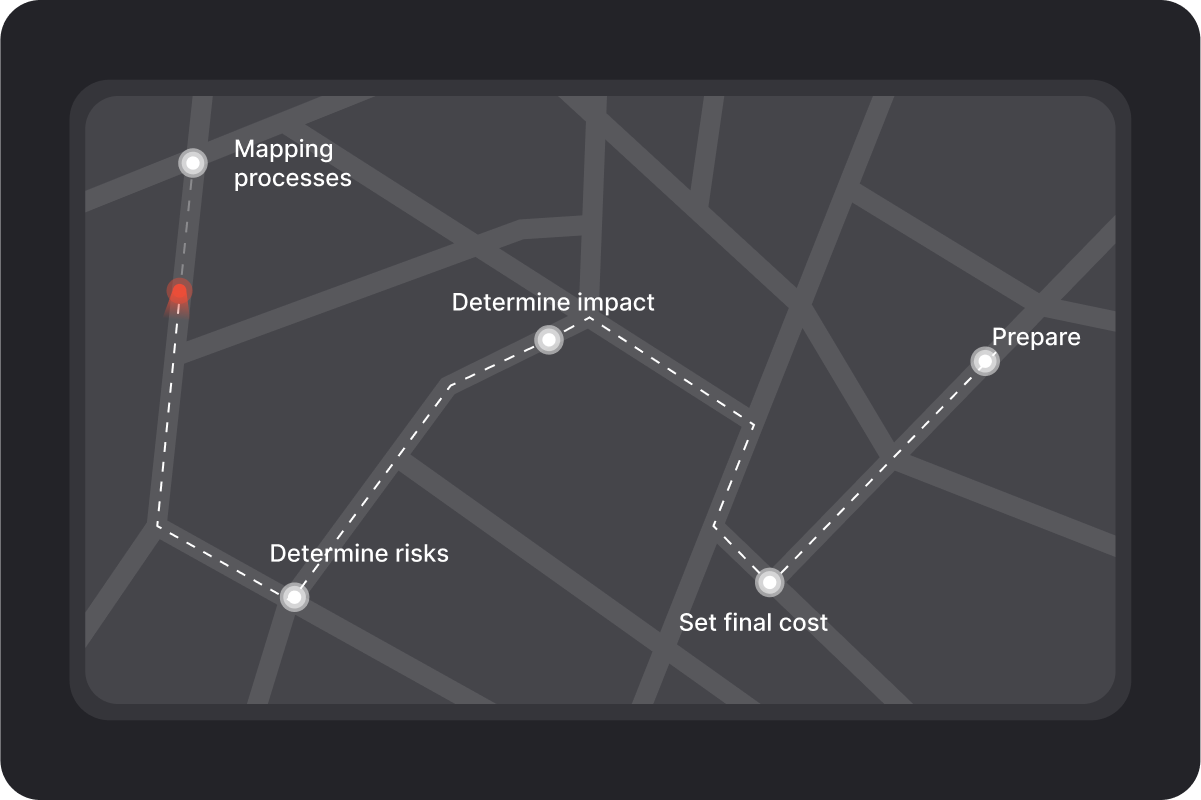
Now that we’ve outlined a contingency cost let’s look at how a marketing firm would develop a plan. To do so, let’s follow the steps listed above to get our final result:
- Mapping processes: First, the project manager would map out each step of the process. This may start with client meetings, website outlines, and social media mock-ups. Then, the project may move to the action phase, where web developers create web pages, designers create graphics, social media accounts are created, and content is produced. Along the way, the manager may note any check-ins with the client.
- Determine risks: Then, the project manager would determine potential contingencies at each process stage. As mentioned, the social media portion may include the risk of hacked accounts. For other parts of the project, like web development, this could include investing in better development software or contracting a high-end developer for technical tasks the team can’t complete. The project manager can now meet with team members to discuss their work and its associated risks.
- Determine impact: Next, the project manager will assess the impact of each risk. This includes examining the likelihood, the support needed, and the timeline for resolving the issue.
- Set final cost: Now that the risks have been identified and assessed, it’s time to estimate the cost. If the cost isn’t clear, this number may be a range, or the manager may calculate on the high end to prepare for the worst.
- Prepare: With the contingency plan in place, the project manager can look for ways to avoid or lessen the impact of unexpected events. The manager should look for proactive opportunities wherever possible, so their team is as prepared as possible in an emergency. This step may include talking with the client about problem-solving or working with employees to implement processes that minimize risk.
Empower your team to work smarter with Rodeo Drive
Create a stress-free project contingency budget with Rodeo Drive
Whether you’ve never drafted a contingency plan or are looking for a faster method, innovative tools can help. At Rodeo, we help teams budget for all situations, so you can identify potential issues and avoid risking profits.
You don’t need to be a financial expert to budget your project. Our tool with help you to:
- Maximize your project’s profit margin: Get your project right from the get-go by creating phase-based budgets outlining time and activity expenses before moving to the production phase. Send your budget estimates to clients for approval to save you time. Concluded a phase or the whole project? Sending invoices becomes even more fun when you can do it in just a few clicks.
- Leverage real-time insights: Proper oversight of your project is nearly impossible without data. Fortunately, Rodeo Drive compiles your data in the "Reports" tab based on your team's usage of the platform. Here, you'll find insights into the financial health of your projects, your team's time registration, and productivity.
- Keep your bookkeeping process tidy: We integrate with QuickBooks and Xero to ensure your bookkeeping is up to date.
- Track time and spending: In Rodeo Drive, tracking time can be done in two ways: either by starting the live timer on your planner when you begin a task or by adding a timecard later on. The interconnected nature of all the features in Rodeo Drive means that when you track time toward a task, your budget will automatically adjust to account for the value of your time. This is beneficial from a project control perspective as it helps identify roadblocks that may be causing your team to waste valuable time, potentially derailing your budget.
Looking for a tool to help you implement your contingency plan and budget? Try Rodeo for free today.





